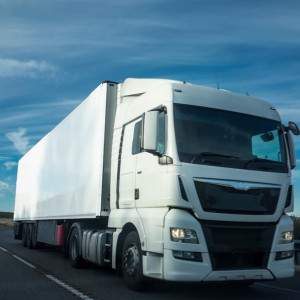Sustainable Fleet Management Techniques to Adopt in 2025


The United Kingdom is slowly phasing out diesel in the transport sector in anticipation of meeting its internal combustion engine ban in 2030 and its net-zero goal in 2050. Adopting sustainable fleet management techniques is no longer a matter of if, but when. Which should management implement in 2025?
The Value of Sustainable Fleet Management in 2025
Since the government announced its plan to decarbonise the entire transport system in 2021 -- with the target of reaching net zero by 2050 -- sustainable fleet management techniques have exponentially increased in importance.
Various other regulations are putting pressure on haulage companies. Many people think they have plenty of time to act, but 2050 seems much closer when considering the extent of the changes required to achieve net zero. Prompt action is crucial for regulatory compliance.
However, compliance is not the only reason managers should adopt eco-friendly management techniques in 2025. Sustainability has value. For one, it can mitigate downtime, which can cost up to GBP605 per vehicle.
It can also help them stay on schedule, which decreases component wear, reduces drive time and supports the local economy.
Sustainable Fleet Management Techniques for Lorries
Fleet management sustainability consists of two parts, the first of which is vehicle optimisation. The better lorries run, the fewer resources they waste and the fewer greenhouse gases they emit. These changes are up to management.
1. Use Preventive Maintenance
Preventive inspections and maintenance alleviate common challenges like accelerated engine wear and roadside breakdowns.
Keeping lorries in good condition enables them to run at peak efficiency for longer, extending their life span and reducing resource waste. Managers can avoid unnecessarily purchasing more equipment, contributing to sustainability. Intelligent algorithms and internet-enabled sensors simplify this sustainable fleet management technique.
Instead of tracking diagnostic code frequency on a spreadsheet, technicians can gain data-driven insights into problems days, weeks or months before signs become noticeable.
2. Embrace Electrification
Researchers from Germany analysed the environmental impacts of heavy-duty vehicles per kilometre compared to diesel-powered lorries. They predict battery-powered electric vehicles will have 76% less global warming potential and produce 73% less PM2.5 pollution by 2050. This timeline aligns with the UK government's transport decarbonisation plan.
To electrify a fleet, owners must phase out diesel lorries with battery-powered alternatives. While the upfront investment cost may be significant, a positive return is likely since power costs less than diesel and batteries are easier to maintain than combustion engines.
3. Switch to Alternative Fuels
The combustion process releases carbon dioxide. Switching to a low-carbon or zero-emission alternative could drastically reduce the transport sector's emissions.
Companies' options include biofuels -- liquid or gas fuel made from renewable organic matter -- or synthetic versions produced with carbon captured from industrial or biological sources. According to Parliament, enabling internal combustion engines to run on a sustainable synthetic could reduce particulate emissions by almost 100%, carbon emissions by 97% and nitrogen oxide pollution by 80% -- all without sacrificing engine performance or operability. Cost may be an issue for now, but alternative fuels will become cheaper as production progresses.
Sustainable Fleet Management Techniques for Drivers
The second component of fleet management sustainability involves employees.
How a person drives and maintains their lorry affects its environmental impact. While management can enforce these changes, responsibility largely falls to the drivers.
1. Conduct Eco-Friendly Training
Fleet managers should not overlook driver behaviour. Even if their equipment consistently operates at peak efficiency, bad habits like harsh braking, idling and rapid acceleration can reduce gas mileage and accelerate wear, adversely affecting sustainability.
Holding periodic, climate-focused training sessions is essential. Management should consider incorporating feedback and monitoring mechanisms to optimise their training methods. This strategy will allow them to incentivise employee compliance and address objections early on.
2. Optimise Routes for Efficiency
Time spent idling substantially increases greenhouse gas emissions and accelerates component wear.
It also delays orders and artificially lengthens trips, which is both costly and time-consuming. According to the Road Haulage Association, congestion costs the UK economy GBP30 billion annually. Fleets can avoid this problem with optimisation.
Tools like route planning software or autonomous algorithms can automatically plan and adjust routes as needed, helping drivers reach their destinations with minimal idling and stops.
Some solutions even get fed real-time weather and congestion information, allowing them to anticipate potential disruptions.
Adopting Sustainable Fleet Management Techniques
Management should carefully consider which sustainable tactics best suit their fleet and drivers.
Conducting a risk analysis or collecting employee feedback may help them resolve challenges, enabling streamlined optimisation.